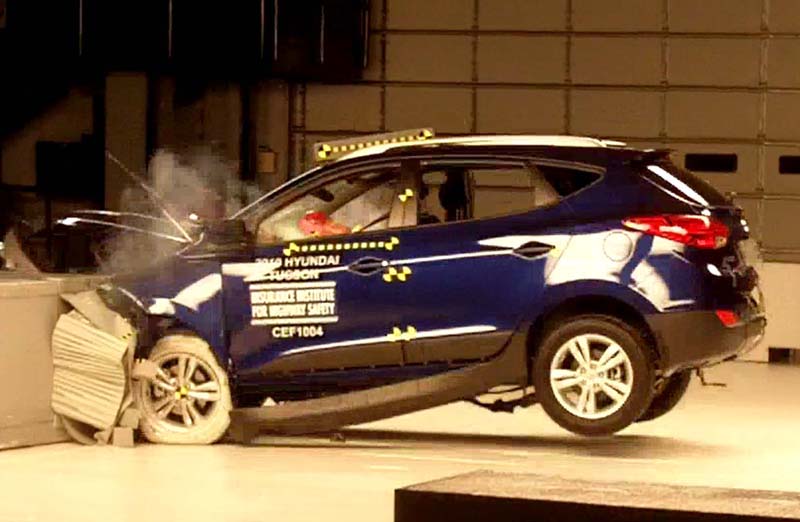Item AP011006: Analyze data to identify patterns that can be used as evidence to support an explanation for how the energy of a car changes during a crash test. (MC version)
An engineer is designing a new car. Part of her job is to make sure that the safety features of the car protect the driver. She tests the safety features by crashing a remote-controlled car into a wall. An adult-sized dummy sits in the driver’s seat of the car. Sensors in the dummy and car measure the amount of damage done to the dummy and car.
During the crash, the car hits the wall producing a loud sound. The car stops moving after the crash.

The engineer does the crash test three times using three identical cars. For each test, the engineer crashes the car at a different speed. She records the car’s mass and speed and the amount of damage in the table below.
| Crash Test |
Mass of car
(kilograms)
|
Speed
(miles per hour)
|
Amount of damage |
| #1 | 1000 | 20 | Small |
| #2 | 1000 | 40 | Medium |
| #3 | 1000 | 60 | Large |
1. Based on the data, what can the engineer conclude about the relationship between the speed of the car and the amount of damage done to the car and the dummy?
A. The faster the car is moving, the larger the amount of damage
B. The faster the car is moving, the smaller the amount of damage
C. The speed of the car is not related to the amount of damage.
D. She cannot conclude anything about the relationship between the speed of the car and the amount of damage.
2. Based on the data, what can the engineer conclude about the relationship between the mass of the car and the amount of damage done to the car and the dummy?
A. The heavier the car is, the larger the amount of damage.
B. The heavier the car is, the smaller the amount of damage.
C. She cannot conclude anything about the relationship between the mass and the amount of damage because the mass does not vary in the data she collected.
3a. Does the car have more, less, or the same amount of energy after crashing than when moving toward the wall?
A. The car has more energy after crashing than when moving toward the wall.
B. The car has less energy after crashing than when moving toward the wall.
C. The car has the same amount of energy after crashing and when moving toward the wall.
3b. What evidence do you have to support your answer about the energy the car has after crashing?
A. The fact that the car stopped moving is the only evidence to support my answer.
B. The fact that sound was produced during the crash is the only evidence to support my answer.
C. The fact that the car stopped moving, and the fact that sound was produced are both evidence to support my answer.
D. I have no evidence to support whether the car has more, less, or the same amount of energy after the crash.
- Percent of Points Earned

- Points Earned
| Avg. Earned | Possible | Percent | |
|---|---|---|---|
| Q1 | 0.76 | 1 | 76% |
| Q2 | 0.56 | 1 | 56% |
| Q3 | 1.56 | 2 | 78% |
- Overall Task Difficulty
| Total Points Earned | Total Points Possible | Total Percent | |
|---|---|---|---|
| 2.88 | 4 | 72% |
n = 274
Note: The total percent is a weighted average based on the total number of points earned divided by the total number of points possible.
- None identified

